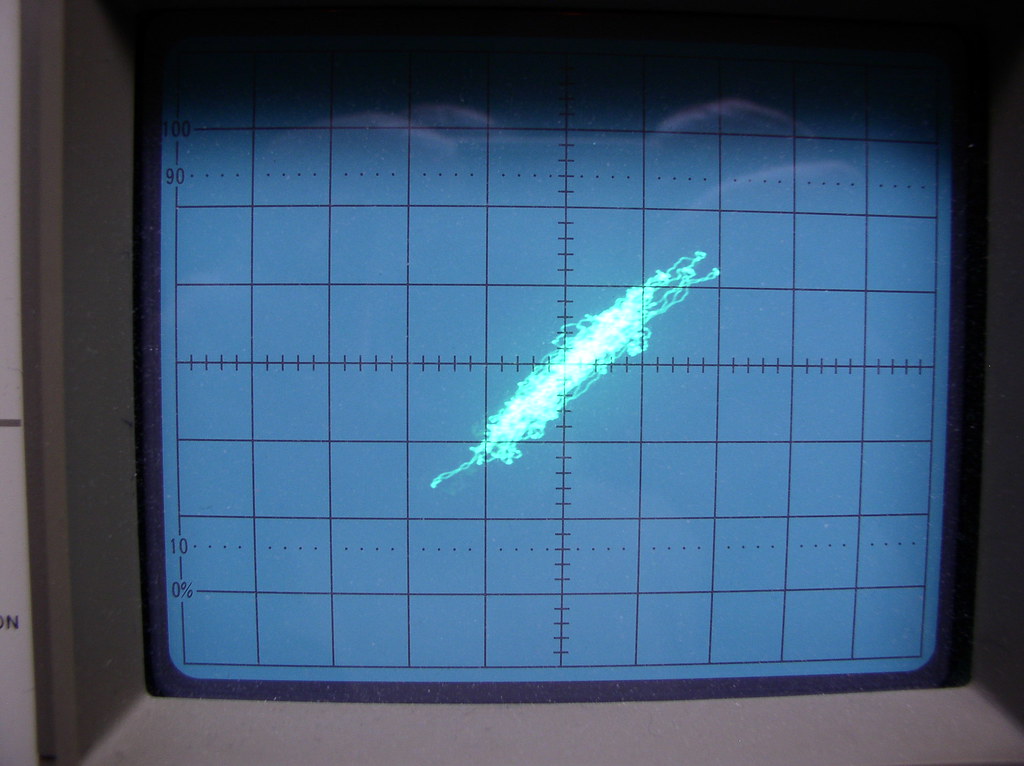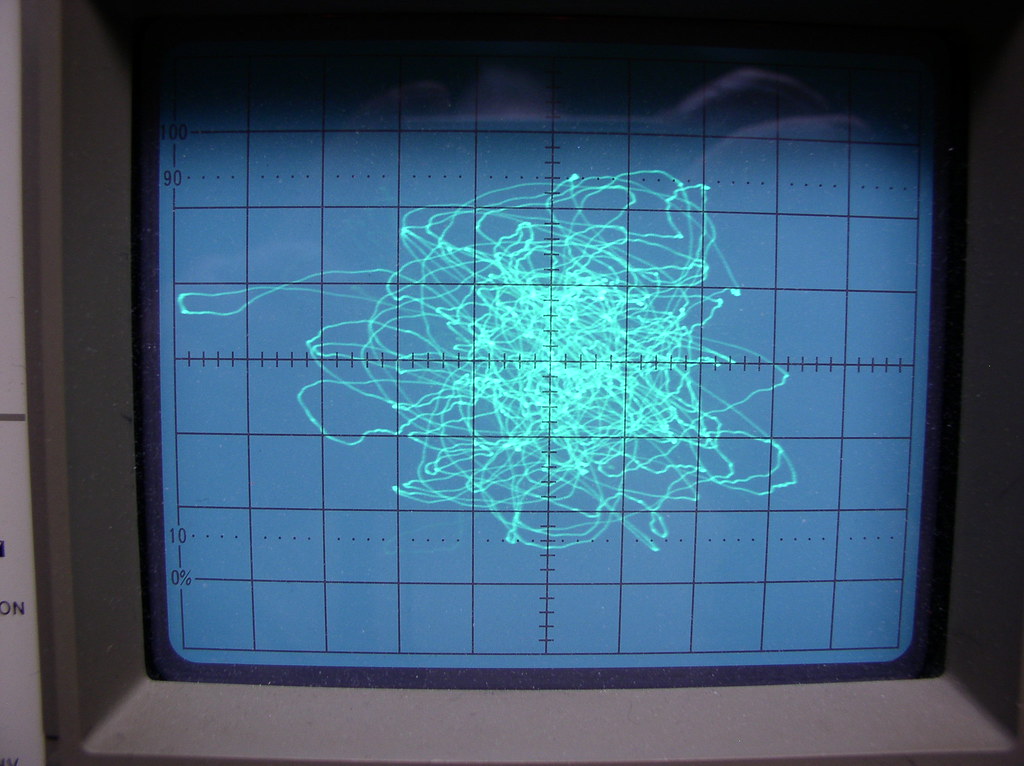For all who have tried to align a MPX unit by ear (I know I did many, many, many moons ago!), Thorne did better than most. I haven't actually aligned his unit yet, but I thought some might be interested in knowing just what the status of his adapter was when received before I do align it. The scope shot shows the stereo output from the adapter with the scope set for dual trace mode, when being fed a Left Channel Only 1 kHz Composite signal from the Fisher Model 300 MPX Generator. The sine wave with the greatest amplitude is in fact the Left Channel stereo output from the adapter, while the sine wave with lower amplitude is the Right Channel stereo output. Properly aligned, the Right channel should show no output at all (basically a straight line), or more practically, an output that is 35 db or more below the output of the Left Channel in this scenario. The measured separation between the two wave forms in the scope shot presented has the Right Channel producing a signal so great, that it is just 10 db below that of the Left Channel.
Like the early "Matrix" style decoder designs, proper operation of Time Division style decoders that Fisher uses depends heavily on proper cancellation (as necessary) between the main and stereo information sub-channel to produce the FCC mandated minimum separation of 30 db between the two stereo channels. No doubt, Thorne adjusted his adapter to perform much better than it originally did. But therein lies the problem: Adjustment by ear lets you easily enough adjust away from "horrible" performance, but invariably never lets you get to optimum performance, because the closer you get, the harder it is to distinguish the improvements made. The result is that the best ear adjustments invariably have the adapter ending up performing somewhere in between, but typically closer to the lower performance end of the scale -- exactly how this one performs as received.
Dave
View attachment 1103652
View attachment 1103655





